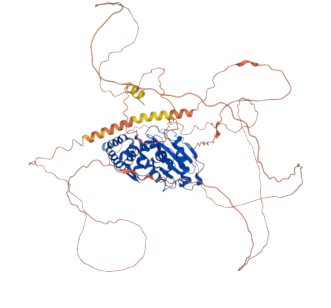Mojave Lichen Resilience Under Intense UV Radiation Suggests Exoplanet Habitability

In a groundbreaking study published on June 12, 2025, in the journal Astrobiology, researchers from the Desert Research Institute (DRI) demonstrated that the common lichen Clavascidium lacinulatum found in the Mojave Desert can survive intense levels of solar radiation that were previously deemed lethal. This research holds significant implications for astrobiology, suggesting that life as we know it might thrive on exoplanets exposed to similar extreme conditions.
The study, spearheaded by Dr. Henry Sun, an Associate Research Professor of Microbiology at DRI, and his graduate student Tejinder Singh, involved subjecting the lichen to ultraviolet (UV) radiation in a controlled laboratory environment for three months. Remarkably, half of the algal cells within the lichen maintained viability and were able to replicate after being rehydrated, despite the exposure to UVC rays, the most harmful type of ultraviolet radiation.
Dr. Sun explained, "Our experiment aimed to determine whether microorganisms could endure prolonged exposure to UVC radiation, which is known to damage DNA and inhibit reproduction. The results indicate that certain life forms possess extraordinary resilience."
Historically, the search for extraterrestrial life has focused on planets within the 'habitable zone' surrounding stars, where conditions are thought to support liquid water. Many of these planets orbit M and F type stars, which emit intense UVC radiation during solar flares. The findings of this study suggest that such environments could potentially harbor life.
The protective capabilities of the lichen were attributed to its unique pigmentation, which acts as a natural sunscreen. Dr. Sun noted that upon examining the lichen, he observed that it was black instead of green, leading to the discovery of its protective pigments. These pigments evolved to shield the organism from solar radiation, including both UVA and UVB rays, while serving an additional protective role against UVC exposure.
To further understand the biochemical mechanisms underlying this resistance, the research team collaborated with chemists from the University of Nevada, Reno. Their investigations revealed that the lichen’s outer layer functions similarly to UV-resistant additives used in plastics, effectively protecting the underlying cells from radiation damage and harmful chemical reactions that can occur in the presence of UV light.
The implications of this research extend beyond terrestrial organisms. The study posits that planets outside our solar system, particularly those with conditions akin to the Mojave Desert, might host microbial life forms that have adapted to withstand extreme solar radiation. "This work reveals the extraordinary tenacity of life even under the harshest conditions, reminding us that life strives to endure," remarked Tejinder Singh, now with NASA Goddard Space Flight Center.
As humanity embarks on a new era of exploration with tools like the James Webb Space Telescope, which allows for unprecedented observation of distant exoplanets, the prospect of finding life beyond Earth is becoming increasingly plausible. The study underscores the need to re-evaluate our understanding of habitability in the universe and to consider the resilience of life forms that could exist under extreme conditions.
In conclusion, the resilience of Mojave lichen under intense radiation serves as a beacon of hope in the search for extraterrestrial life, suggesting that our understanding of life’s potential to thrive in hostile environments is still evolving. Further research in astrobiology and related fields will enhance our knowledge of where life might exist beyond our home planet.
Advertisement
Tags
Advertisement





